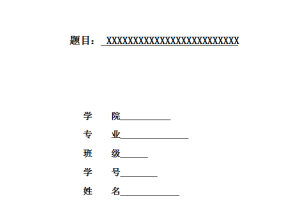摘 要
商务谈判本质上是一种运用语言进行经济的活动。它的成功与否依赖于语言的运用。在商务合同谈判中,谈判双方既相互竞争又要相互合作。在保持合作关系的前提下,每一方都会想方设法地去赢取自身的最大利益。然而商务合同谈判中由于双方利益对立的关系,冲突和争端是不可避免的。所以怎样平衡谈判中的竞争和合作,对谈判者来说是非常重要的。这需要通过使用恰当的语言来实现,尤其是使用礼貌语言。
许多学者从心理学、经济学的角度对商业谈判所需的技巧作了深入研究,但从语言学的角度来阐释语用策略对商务谈判的影响这方面的研究不多见。 本论文希望通过从词汇、时态、语态和句法方面对商务谈判中礼貌语言和策略进行研究,来对这一领域的研究做出一点贡献。本论文结合了格赖斯的合作原则、利奇的礼貌原则、布朗和莱文森的面子理论这三种理论对商务谈判中的案例进行比较详细全面的研究和探讨。
希望该项研究能够给商务谈判者提供一些规则和指导,帮助他们更好地解决谈判中遇到的冲突和争端,并帮助他们运用恰当的礼貌语言和策略去创造一种和谐合作的关系进而推动谈判的顺利进行,最终实现商务合同谈判的高效和双赢。
关键词:商务口语谈判;消极礼貌;积极礼貌;礼貌原则
Abstract
Business contract negotiation is essentially a kind of economic activity through language. Whether it succeeds or not depends on the use of language. In business negotiation, both parties have to cooperate with each other as well as being competitive against each other. Either party will endeavor to, win the most benefits while maintaining cooperation with each other. However, discrepancies and conflicts are inevitable in business negotiation due to the competitive economic interest of both parties. So it seems crucial for negotiators to find the way of balancing competition and cooperation in business negotiation. Undoubtedly, this goal
has to be achieved through the appropriate language, especially the polite language.
Numerous books have been published to offer guidelines for business negotiation, but they rarely give attention to linguistic strategies in business negotiation. So this dissertation aims to analyze linguistic realization of politeness in business negotiation with regard to lexicon, tense, voice, mood, and syntax. Grice’s Cooperative Principle, Leech’s Politeness Principle and B & L’s Face Theory serve as underlying principles in our analysis and the description of the case study. Based on these theories, a careful case analysis of linguistic strategies of politeness in business contract negotiation is made.
It is hoped that this research will provide some guidelines for business negotiators to settle disputes and conflicts in business contract negotiation, assist them in creating a cooperative relationship with each other through employing proper linguistic strategies of politeness theory and finally improve the efficiency of business contract negotiation and realize the long term win-win negotiation.
Key Words: Business Contract negotiation, Negative Politeness, Positive Politeness:
Politeness Principle
目 录
摘 要 I
Abstract II
Chapter One Introduction 1
1.1 Rationale of the study 1
1.2 Research Methodology 1
1.3 Data collection 1
Chapter Two Literature Review 3
2.1 The Brief Survey of Business Negotiation 3
2.1.1 The Definition of Business Negotiation 3
2.1.2 The Principles of Business Negotiation 3
2.1.3 The Lan guage in the Context of Business Negotiation 4
2.2 Studies on the Development of Politeness Theories 4
2.2.1 Studies abroad 4
2.2.2 Studies at home 5
Chapter Three Theoretical Foundations 8
3.1 Four Main Views of Politeness Theories 8
3.2 Grice’s Cooperative Principle 8
3.3 Lakoff`”s Theory of Politenes 8
3.4 Leech’s Politeness Principle 8
3.5 Brown and Levinson’s Face Theory 8
3.5.1 Concept of Face 8
3.5.2 Face-threateningActs (FTAs) 8
3.5.3 Politeness Strategies 8
3.5.4 Three Independent Variables 8
Chapter Four Linguistic Analysis of Politeness Theories in Business Contract Negotiation 9
4.1 Negative Politeness 9
4.1.1 Lexical Items 9
4.1.1.1 Personal Pronoun 9
4.1.1.2 Hedging Words and Phrases 9
4.1.1.3 Hesitation Words 9
4.1.2 Syntax 9
4.1.2.1 Conditional Clause 9
4.1.2.2 Interrogative Sentences 9
4.1.3 Tense and Voice 9
4.1.3.1 Tense 9
4.1.3.2 Voice 9
4.1.4 Summary 9
4.2 Positive Politeness 9
4.2.1 Lexical items 9
4.2.1.1 Hedging words and phrases 9
4.2.1.2 Transitional Word “But” 9
4.2.2 Syntax 9
4.2.2.1 Hedging Sentences 9
4.2.2.2 Tag Questions 9
4.2.3 Voice 9
4.2.4 Summary 9
Chapter Five Results and Discussion 10
5.1 Research Results 10
5.2 Politeness in Psychological and Social-cultural Perspectives 10
5.2.1 Politeness in Psychological Perspective 10
5.2.2 Politeness in Social-cultural Perspective 10
Chapter Six Conclusion 11
6.1 General Summary 12
6.2 Possible Theoretical and Practical Significance 13
6.3 Limitations 13
6.4 Suggestions for Further Studies 13
References 13
Appendix 13





